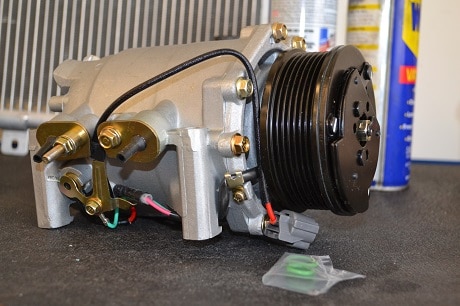
Facts to know about the compressor clutch coil
September 7, 2021
Checking the clutch air gap before installing a compressor is an important step in compressor installation. This is because of the possibility of a clutch air gap getting knocked out of adjustment due to rough handling or it being gapped incorrectly at the factory. These issues of course can cause problems with clutch operation. If detected and corrected before compressor installation, a lot of time can be saved.Read Article >
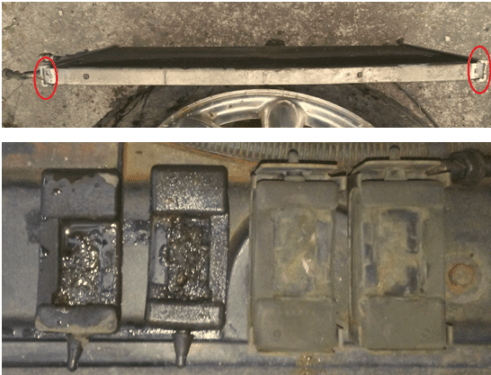
Finding right side up
August 3, 2021
Most condensers have different fittings on the inlet and outlet. The locations of the inlet and outlet on most condensers will not allow lines to be connected incorrectly, even if the fittings do happen to be the same size. Lastly, the designs of the mounts on most condensers prevent a unit from being installed upside down. However, none of these characteristics apply to the condenser the technician had installed.Read Article >

Did you install the condenser upside down and backwards?
July 27, 2021
The vehicle was a 1998 Chevrolet C 1500 truck with a 5.7 engine. The issue was excessive high side pressure. Almost as soon as the compressor clutch engaged, the high side pressure was over 400 PSI, and the high-pressure cut-off was turning the compressor on and off.Read Article >
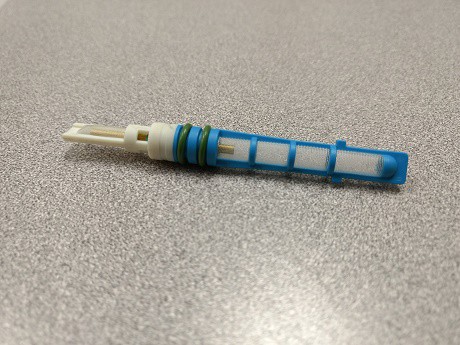
Top three tips on orifice tube behavior
July 20, 2021
In the last four MACS blog articles we covered a lot of detailed information about orifice tube system behavior. We examined a system with a full refrigerant charge verses a 25% undercharge. Now it is time to condense it all down into three important takeaways.Read Article >

Low refrigerant charge and the search for real data part 3
July 6, 2021
To place as much heat load on the system as possible, we turned the heat in the shop up on high and got it as hot as possible before beginning the test. When the temperature peaked at 89°, we began the test. We tried to keep it constant, but all the heat being generated by the engine in the test vehicle caused it to inch upward by 2.5° before the second test was concluded.Read Article >
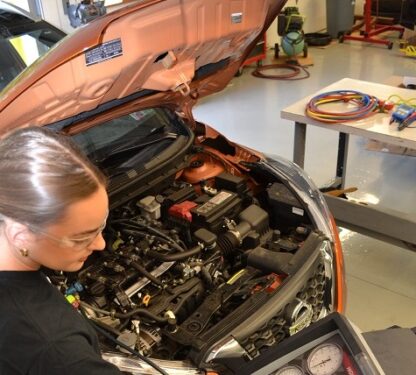
What’s the word on R-134a price & supply?
June 24, 2021
The email questions are already coming in, and they go kind of how you’d expect: What’s going on with the price of R-134a? Is there going to be a shortage of R-134a supply?Read Article >

Low refrigerant charge and the search for real data
June 22, 2021
I had read about how low refrigerant charges could increase compressor operating temperatures and decrease the amount of oil flowing to compressors, but I had never been able to find results from any tests. After discussing this with MACS, we decided to do some testing to get some real data.Read Article >
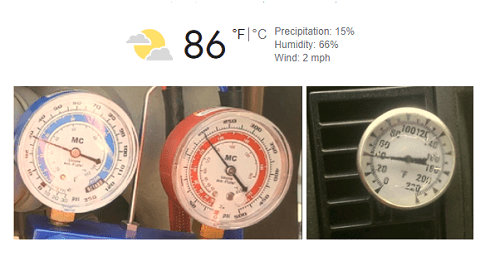
Refrigerant capacity and mobile A/C service: part 2
June 15, 2021
One of the most frequently asked questions on tech help-line calls concerns refrigerant capacity: How much refrigerant is in that mobile A/C system, and have you checked to be sure the refrigerant is pure?Read Article >
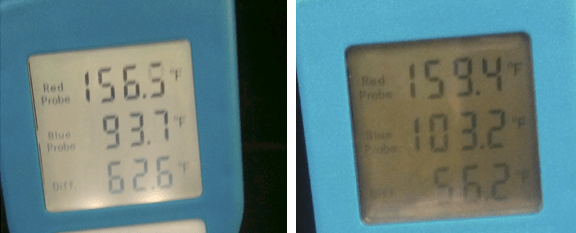
Focus on the condenser!
May 31, 2021
In last week's article, we focused on applying temperature testing to an evaporator in an orifice tube system. In it we illustrated how and why a low liquid level in the evaporator can cause a large temperature differential between the inlet and outlet. We also indicated how and why raising the liquid level will cause the temperature differential to decrease. Now it is time to focus on the condenser.Read Article >

Show me your MACS 609 card
May 26, 2021
When you purchase refrigerant in quantities of two pounds or more you must show your Section 609 card.If you are Section 609 certified through MACS between 1991 and May 2021...Read Article >
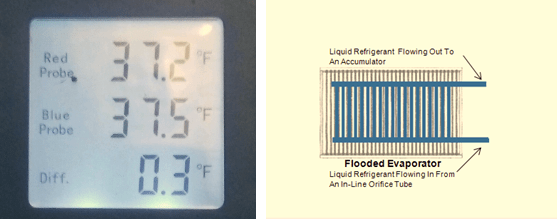
Temperature testing detective work: The search for a diagnosis
May 25, 2021
Last week we closed our blog post with a discussion about an orifice tube system which had an evaporator outlet temperature that was about 20° warmer than the inlet. We mentioned that this could be an indication of a restricted orifice tube or a refrigerant undercharge. In applying this to diagnostics, it is important not only to understand what this represents, but also why.Read Article >


